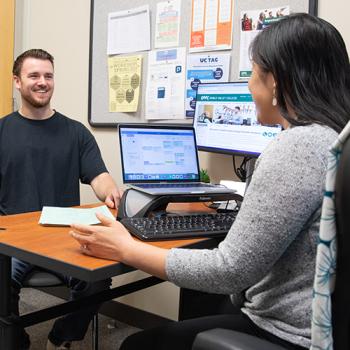Welcome to the Diablo Valley College Counseling Department!
Our counselors are here to guide and support your unique journey. We offer personalized counseling to help you achieve your educational and career goals. Services include education and transfer planning, career exploration, and personal counseling.
Our counselors assist with:
- class selection
- degree requirements
- career exploration
- 4-year university/college transfer opportunities
Regular counseling appointments can ensure you stay on track and enhance your success at DVC. Visit us to start achieving your academic and personal aspirations.
Fall Counseling
We book our appointments 2 weeks in advance. Use the link below, stop by our office or call 925-969-2140.
If you schedule an in-person appointment with a DVC Pleasant Hill counselor and you cannot come into the office, please call 925-969-2140 and ask the appointment to be changed to Zoom.
If you are a high school student, please meet with your high school counselor or meet with your principal if you have questions on:
- How a DVC class meets A-G requirements.
- How a DVC class meets other high school requirements.
- How to apply as a first-year student to colleges/universities.
High school juniors or seniors may enroll in COUNS-095NC to meet with a DVC counselor and create an education plan.
We also have drop-in sessions (10-15 minutes) if you have questions about:
- How a DVC class will transfer to another college or university.
- Classes required for transfer.
- The transfer process.
-
We offer in-person and zoom/phone drop-in sessions (15 minutes for brief questions). Please use the button below, stop by our office or call our office at 925-969-2140.
Get Added to the Drop-in List -
Please complete the form linked below to request a fall transcript evaluation appointment.
Make a Fall Transcript Evaluation Appointment
Fall and Spring Counseling - Choose from the Options Below




